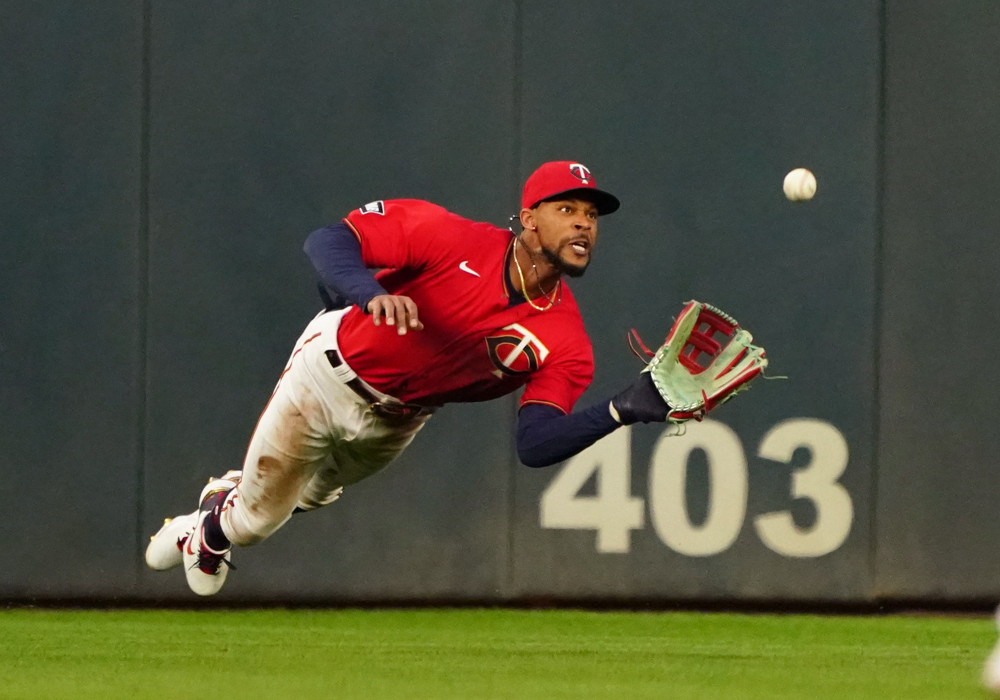Blue Jays shortstop Bo Bichette is a very, very, very good baseball player. He’s coming off a season in which he led the AL in hits and had 29 home runs, 102 RBIs, and 25 stolen bases in 26 attempts.
There’s just one thing missing from Bichette’s game. Though he rates well at getting to balls, he does not rate well at throwing them and completing plays.
In our PART system, we’re able to separate performance in both range and throwing which can tell us if a player is particularly good or bad at one or the other.
Here are the leaders at Range Runs Saved among shortstops over the last three seasons.
Most Range Runs Saved – Shortstops Since 2019
| Player | Range Runs Saved |
| Trevor Story | 35 |
| Paul DeJong | 26 |
| Javier Báez | 20 |
| Bo Bichette | 17 |
| Carlos Correa | 14 |
| Willy Adames | 14 |
Bichette’s numbers are impressive here. He’s in excellent company.
And here are the trailers in Throwing Runs Saved at that position since 2019.
Fewest Throwing Runs Saved – Shortstops Since 2019
| Player | Throwing Runs Saved |
| Fernando Tatis Jr. | -16 |
| Xander Bogaerts | -15 |
| Bo Bichette | -11 |
| Jorge Polanco | -10 |
| Luis Urías | -10 |
And therein lies the issue.
In 2021, the split for Bichette was 7 Runs Saved from range and -6 Runs Saved from throwing. He finished the season a positive overall at shortstop with 2 Runs Saved after factoring in the other components that go into that stat (particularly Good Fielding Plays, which allows us to make additions for things like keeping balls in the infield and throwing runners out at the plate, and Double Plays).
He was alright overall… but he left a lot of room to be better.
Bichette had 16 throwing-related Misplays & Errors last season.
Three players had more. Isiah Kiner-Falefa had 20, Fernando Tatis Jr. had 18, and Javier Báez had 17.
On the opposite end of the spectrum, Pirates shortstop Kevin Newman had only two. Fielding Bible Award winner Carlos Correa had 6.
The thing that I got to wondering was – what if Bichette had been a better fielder and had turned half of those plays (8 of them) into outs? What would his Runs Saved total have been?
We plucked eight Bichette throwing miscues from his defensive ledger. They include a couple of wide throws, a few high throws, and a couple of low throws (and yes, you could make a case that a better defensive first baseman might’ve helped a little bit).
Here’s video of three of them:
A wide one with slow catcher Pedro Severino running. This one cost him nearly three-quarters of a run in Defensive Runs Saved (-.74 from a 95% out probability)
An airmail with Jahmai Jones running. This one also cost him nearly three-quarters of a run (-.73 via a 94% out probability)
Another airmail with arguably the slowest player in baseball, Miguel Cabrera, running. This one dinged him about two-thirds of a run (-.65 via an 84% out probability).
Had Bichette made those three plays, he would have gotten back the .74, .73, and the .65 Runs Saved that he lost for each of those hitter’s being safe, a combined 2.1 runs.
He would have also been rewarded for getting the out on each of those plays. Given that those plays had out probabilities of 95%, 94% and 84%, that gain isn’t much, about 0.2 runs. The value gains are small because those plays don’t rate as difficult.
Repeating that process for the other five plays on our eight-play list and Bichette gains about 3.5 runs back for the runner not reaching base and another .4 runs for recording an out on each of those plays. In other words, about 4 runs.
Take the 2.3 runs from the three plays for which we showed video and add them to the 4 runs from the five other plays and you get 6.3 runs.
If Bichette had been 6 runs better on throws from shortstop, he would have rated right around MLB average as a thrower. And he would have gone from 2 Defensive Runs Saved for the 2021 season to a more solid and well-regarded 8 Runs Saved.
That’s from eight throws, or about one for every 20 games that Bichette played last season.
You could look at that in a couple of ways.
He’s not that far from being a standout defensive shortstop.
And it also goes to show that it doesn’t take a lot of plays to change how we might perceive a player’s defensive performance.


